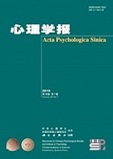|
|
A COMPARISON OF FACTOR ANALYTIC STUDIES AMONG WECHSLER ADULT INTELLIGENCE SCALE—REVISED IN CHINA(WAIS—RC),WAIS AND WAIS—R
Dai Xiaoyang,Gong Yaoxian Hunan Medical College
1987, 19 (01):
72-80.
A factor analysis using average correlation matrices of threestandardized age groups in four sample-sizes such as the urban and ruralresidets of WAIS-RC, WAIS and WAIS-R, were performed usingprincipal component analysis method. Main results are as follows: 1. Number of factors: In most age groups of the four sample sizesonly one principal factor was found, while the other age groups hadtwo principal factors. 2. Results of two different factor analytic methods: In general, allverbal subtests had higher loading on factor A, while all performancescale subtests except digit symbol had higher loading on factor B. 3. Results of the three different factor analytic methods: the highestloading on factor A is found in the following subtests: information,comprehension, similarities and vocabulary Medium loading is foundin picture completion. The highest loading on factor B is found in objectassembly, medium loading in picture completion, block design andpicture arrangment; the highest loading on factor C is found in digitspan, medium loading in arithmetic and digit symbol. 4. Results of analysis of g factor: Some subtests such as information,similarities, comprehension, vocabulary, block design and picturecompletion have the highest loading on g factor, other subtests of fullscale have a medium loading. 5. Factor models between WAIS-RC and WAIS of WAIS-R arevery similar.
Related Articles |
Metrics
|




